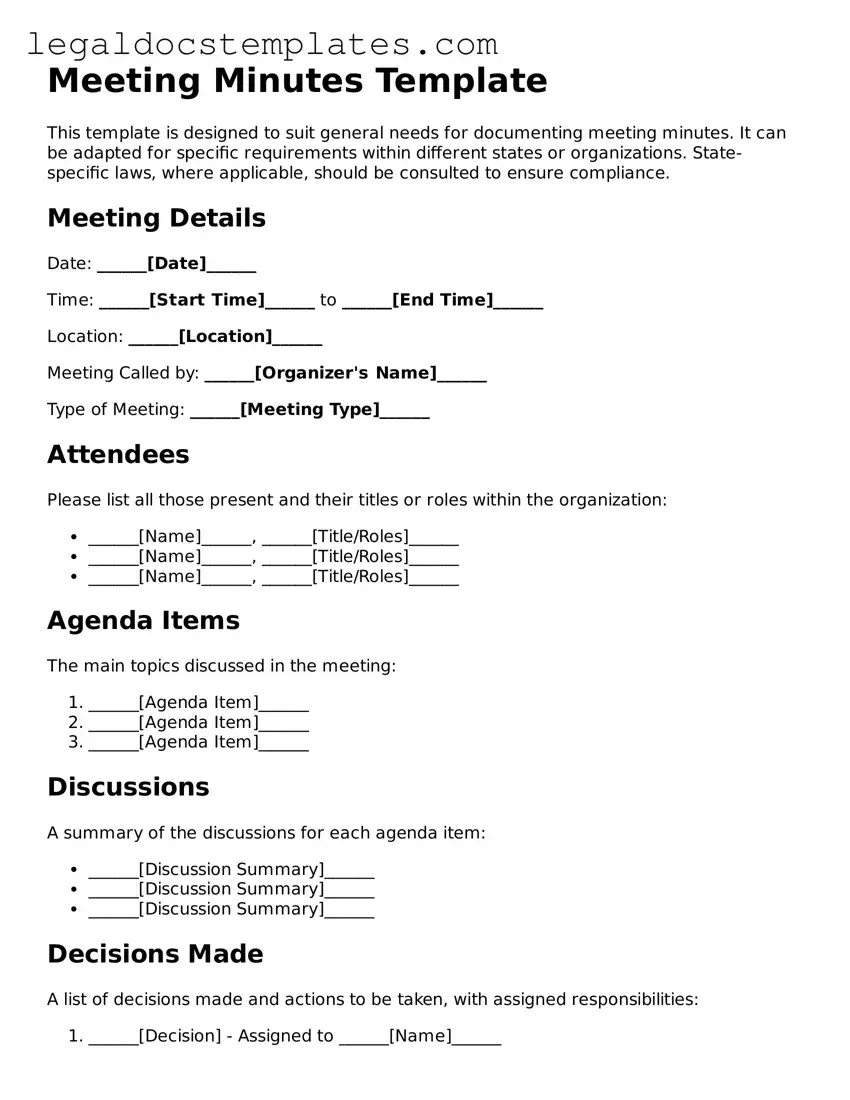What are meeting minutes?
Meeting minutes are a written record of what was discussed, decided, and action items assigned during a meeting. They document the key points and are an official account that can be referred back to for clarification, tracking progress, or informing those who were unable to attend.
Why are meeting minutes important?
There are several reasons why meeting minutes are crucial:
-
Accountability: They assign and track the responsibility of tasks.
-
Record Keeping: They serve as a historical record of decisions and policies.
-
Legal Protection: In some cases, they can serve as evidence of due diligence and decision-making processes.
-
Information Sharing: They inform people who were unable to attend the meeting about what was discussed.
Who should take the meeting minutes?
This task is often assigned to a secretary, an administrative assistant, or another designated attendee. The key is choosing someone who can listen attentively, capture key points accurately, and has enough understanding of the topic to identify what information is important to record.
What should be included in meeting minutes?
Effective meeting minutes should cover several key points:
-
Date, time, and location of the meeting.
-
List of attendees and notable absentees.
-
Agenda items and the person responsible for each.
-
Summary of the discussion for each agenda item.
-
Decisions made and actions taken, including assigned responsibilities and deadlines.
-
Any documents, reports, or other attachments discussed during the meeting.
There's no one-size-fits-all format for meeting minutes, but they should be clear, organized, and easy to read. A standard template might include sections for date and time, attendees, agenda items, discussions, decisions, action items, and next meeting date and agenda. The format should be consistent across meetings for simplicity and ease of reference.
How detailed should meeting minutes be?
Meeting minutes should balance between brevity and detail. Focus on capturing the essence of the discussion, key decisions, and specific action items. Avoid transcribing conversations verbatim. Instead, summarize discussions and highlight outcomes and next steps.
What is the process for approving and distributing meeting minutes?
After the meeting, the person responsible for taking minutes should clean them up, making sure they're clear and accurate, and then distribute a draft to key attendees for review. Once reviewed and if necessary, revised, the minutes should be finalized and approved by a designated authority, such as the chairperson or a senior official. Finally, distribute the approved minutes to all attendees and other stakeholders, ensuring to maintain any necessary level of confidentiality.
Should meeting minutes be kept confidential?
This depends on the nature of the meeting and the organization's policies. Minutes of regular business meetings are generally not considered confidential and may be shared widely within the organization. However, minutes from meetings that involve sensitive topics, such as personnel issues or proprietary information, should be treated with discretion. Always follow your organization’s guidelines on confidentiality.
How long should meeting minutes be retained?
The retention period for meeting minutes can vary depending on the organization and the type of meeting. Some must be kept indefinitely as part of an organization's official record, while others might only need to be retained for a few years. Consult your organization's records retention policy or legal requirements to determine the appropriate retention period for your meeting minutes.
Do electronic meeting minutes need to be stored differently?
Electronic meeting minutes should be stored securely in a format that is both accessible and protected from unauthorized access or alterations. Consider backing them up in multiple locations, such as cloud storage and local drives, to prevent loss. Ensure that your method of storing electronic minutes complies with your organization's IT and data retention policies.
